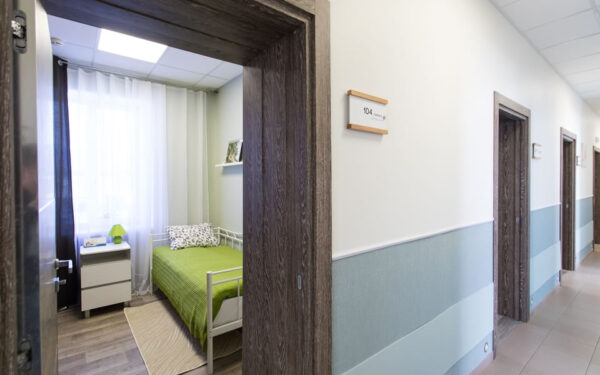Proposed Fiscal Year 2014 Payment And Policy Changes For Medicare Inpatient Rehabilitation Facilities

Overview. On May 2, 2013, the Centers for Medicare & Medicaid Services (CMS) issued a proposed rule outlining proposed fiscal year (FY) 2014 Medicare payment policies and rates for the inpatient rehabilitation facilities (IRFs) Prospective Payment System (PPS), as well as updates and changes for the IRF Quality Reporting Program (QRP). The FY 2014 proposals are summarized below.
PROPOSED CHANGES TO IRF PAYMENT POLICIES AND RATES:
Updates to the payment rates under the IRF PPS. Based on proposed changes contained within this rule, CMS estimates that aggregate payments to IRFs will increase by $150 million, or 2.0 percent. This estimated increase is attributable to a 1.8 percent payment update, which includes a 2.5 percent market basket increase factor, reduced by a 0.4 percent multi-factor productivity adjustment and an additional 0.3 percentage point reduction as required under the Affordable Care Act. In addition, CMS is proposing an update to the outlier threshold, which would increase IRF PPS payments by an estimated 0.2 percent.
Facility-level adjustment updates. CMS is proposing updates to the IRF facility-level rural, low-income percentage, and teaching status adjustments, including a new variable in the regression methodology to indicate whether the IRF is a freestanding hospital or a unit of an acute care hospital (or critical access hospital). The updated methodology enhances the accuracy of the adjustments. CMS continues to base the adjustments on three years’ worth of data, instead of one year, to improve the stability of the adjustments over time.
“60-percent rule” Presumptive Methodology Code List Updates In order to be excluded from the hospital inpatient PPS and be paid at the higher IRF PPS rates, an inpatient hospital must demonstrate that at least 60 percent of its patients meet the criteria specified in the regulations, including the need for intensive inpatient rehabilitation services for one or more of the 13 listed conditions, representing a presumptive need for intensive inpatient rehabilitation. Compliance is demonstrated through either medical review or the “presumptive” method, in which a patient’s diagnosis codes are compared to a “presumptive compliance” list. For FY 2014, CMS proposes to remove a number of codes from the “presumptive compliance” list because the described conditions would not prove compliance in the absence of additional facts that would have to be pulled from a patient’s medical record. We have not updated the presumptive methodology policies since 2004, and we welcome comments on this proposal.
CMS is proposing to revise the list of codes so that it reflects only those codes which can be identified presumptively as both representing the 13 conditions and requiring intensive rehabilitation. The proposed revisions fall in the following categories: non-specific diagnosis codes, arthritis diagnosis codes, unilateral upper extremity diagnosis, some congenital anomalies diagnosis codes, other miscellaneous diagnosis codes.
PROPOSED CHANGES TO THE IRF QUALITY REPORTING PROGRAM:
Prior-Year Quality Measures. CMS proposes to continue to use the NQF-endorsed National Healthcare Safety Network (NHSN) Catheter-Associated Urinary Tract Infection (CAUTI) outcome measure that we adopted in the FY 2013 OPPS/ASC PPS final rule. This measure had been updated from a non-endorsed measure we adopted in the FY 2012 IRF PPS final rule. CMS proposes to adopt the NQF-endorsed version of the “Percent of Residents or Patients with Pressure Ulcers that are New or Worsened (Short Stay)” measure, and to stop using the non-risk adjusted version of this measure.
New Quality Measures. In this rule, CMS is proposing to add three new quality measures to the IRF Quality Reporting Program: NQF #0680: Percent of Residents or Patients Who Were Assessed and Appropriately Given the Seasonal Influenza Vaccine (Short-Stay); NQF #0431: Influenza Vaccination Coverage among Healthcare Personnel; and an All-Cause Unplanned Readmission Measure for an Unplanned Readmission Measure for 30 Days Post Discharge from Inpatient Rehabilitation Facilities.
Proposed Changes to the IRF Patient Assessment Instrument. In order to adopt the NQFendorsed pressure ulcer measure, which is a risk-adjusted measure, CMS has proposed to revise the IRF-PAI to include the data elements necessary to accommodate risk adjustment. Also, based on feedback CMS received from wound care experts and IRF providers, CMS is proposing to revise the pressure ulcer question set on the IRF Patient Assessment Instrument, in order to better reflect up-to-date medical practice and better assess patients’ needs.
CMS proposes to add new patient influenza vaccination data elements to the Quality Indicator section of the assessment instrument, and to change the assessment instrument data collection period from a calendar year to a fiscal year. Data that is reported to the National Health Safety Network (NHSN) would continue data collection based on a calendar year period.
Proposed Reconsideration and Disaster Waiver Processes for Quality Reporting. In this rule, CMS is proposing to implement both a reconsideration and disaster waiver process for Quality Reporting. The reconsideration process would allow IRFs to dispute a finding of noncompliance with quality reporting requirements. The proposed disaster waiver process would allow providers that experienced a natural or man-made disaster to request a waiver of quality reporting requirements under a disaster waiver statute or through the reconsideration process.
For more information, please see: www.cms.hhs.gov






